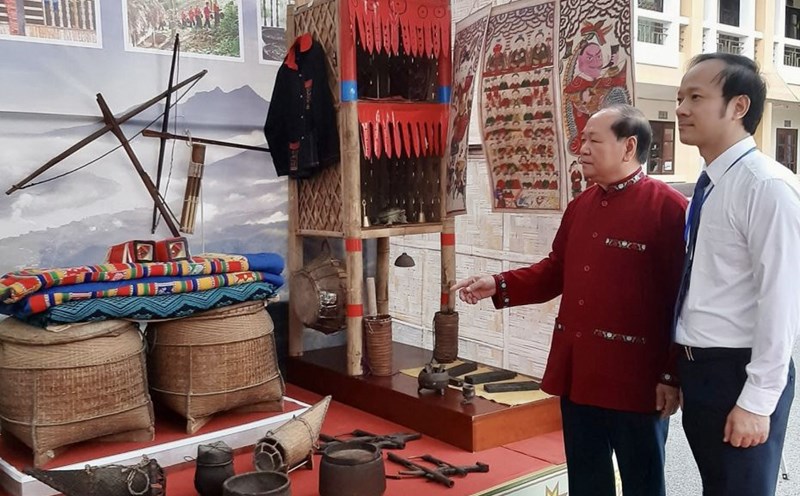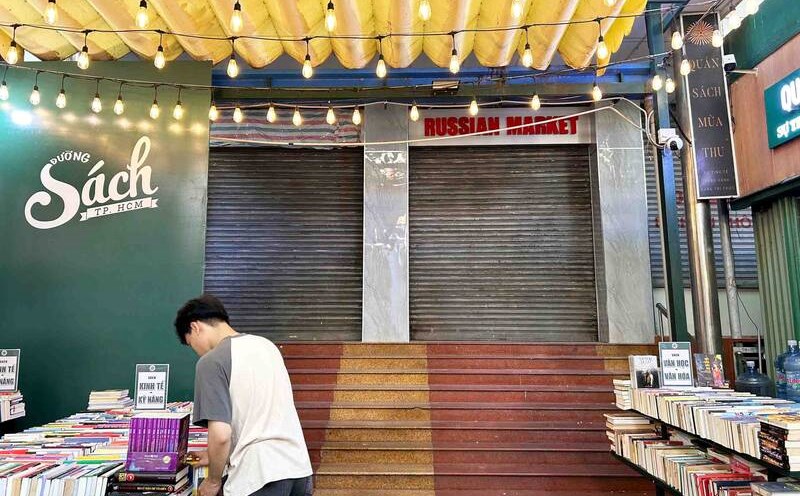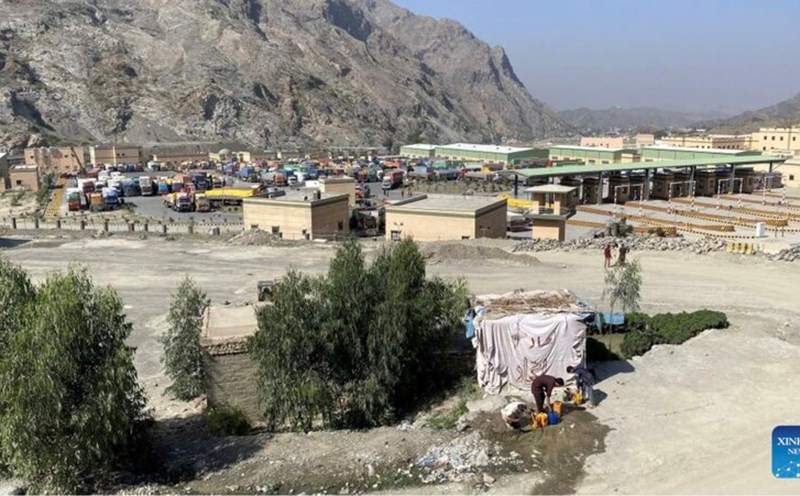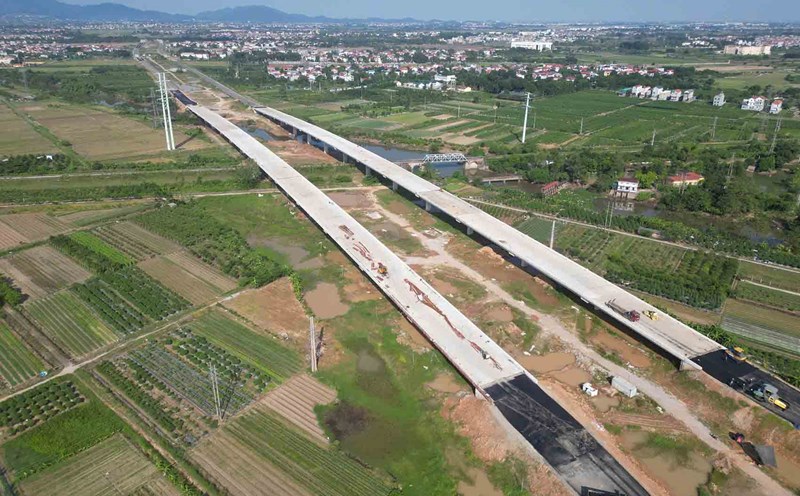In that integrated flow, preserving and promoting the cultural identity of the Muong Hoa Binh people becomes a problem not only of heritage but also the foundation for sustainable development in the future.
Unique features of Muong culture
The Muong people are one of the four most populous ethnic minorities in the country, with more than 1.5 million people. In Hoa Binh province alone (old), the Muong people accounted for more than 60% of the province's population.
The Muong people have had a rich, unique and sustainable cultural life over hundreds of years. Among them, Muong Bi, Muong Vang, Muong Thang, Muong Dong were once considered the "Tu Muong" - the ancient cultural center of the Muong people.
The cultural imprint is clearly shown from the stilt house architecture, traditional costumes, belief rituals to community life, all of which create a complex imbued with the character of ancient Muong.
One of the outstanding values is the art of shaping traditional costumes. The "song dress" of Muong women is hand-woven with sophisticated patterns, expressing aesthetic knowledge and concepts of the universe, earth, sky, and people.
Folk culture researcher Nguyen Tu Chi once commented: The Muong people have woven their entire concept of aesthetics into womens robes. The dress stall here is like a statue, like a painting".
The living space of the Muong people is also very typical, with the architecture of stilt houses with high community value. Each house is not only a place to live but also a place for cultural activities - where rituals such as weddings, celebrating new rice, singing Vi, singing Diem take place...
In spiritual life, the Muong people have a rich treasure trove of old stories, proverbs, and folk songs, associated with agricultural production and profound philosophy of life.
Mo Muong - a sacred ritual associated with spiritual life is a spiritual treasure of the Muong people, containing a huge amount of folk knowledge, passed down through many generations. Along with that, Muong gong is the soul of festivals, the voice of the community and beliefs. Both of these types have been recognized as National Intangible Cultural Heritage and are being submitted to UNESCO for recognition as a Human Heritage.
In particular, since 2016, the Muong ethnic writing system was officially issued according to the decision of the People's Committee of the old Hoa Binh province, marking a major step forward in the process of preserving and developing Muong culture systematically. The adaptation of Mo Muong, epics, stories... into writing, translating into Vietnamese and other languages is opening up the possibility of more extensive storage, dissemination and research.
However, the integration process also brings many challenges. The new lifestyle causes the younger generation to gradually move away from traditional values, community activities become blurred, rituals and traditional customs are at risk of fading away if there are no timely conservation measures.
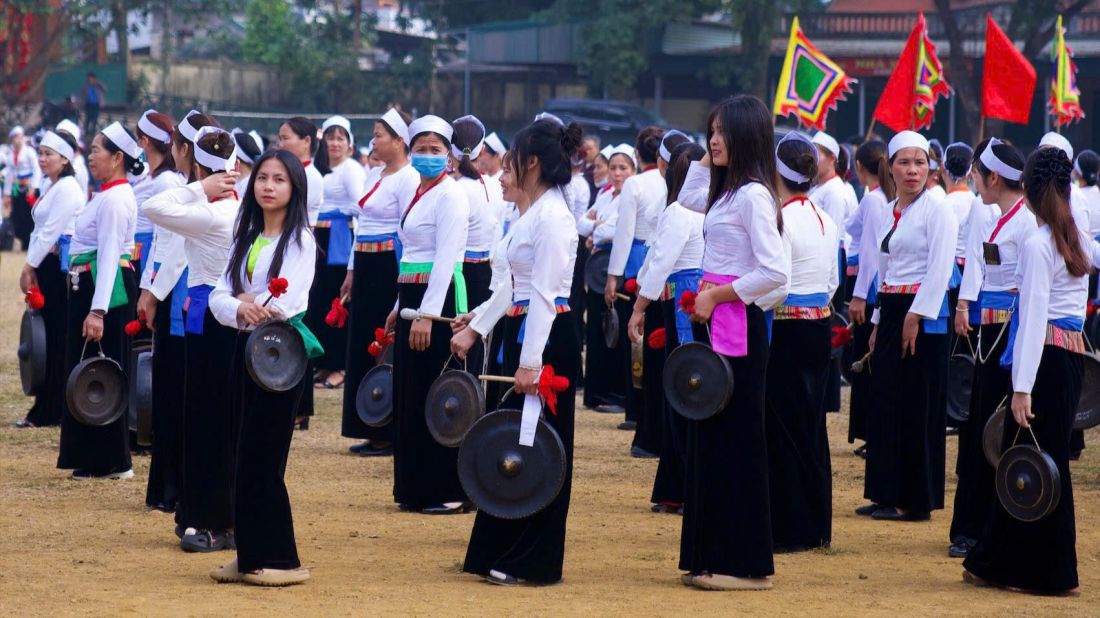
Preserving culture and developing tourism
Faced with that reality, the new Phu Tho province with its expanded administrative space after the merger has been implementing many solutions to preserve and promote Muong cultural values, associated with socio-economic development and sustainable tourism.
In mountainous communes with a large population of Muong people such as Muong Bi, Muong Vang, Thuong Coc, Yen Thuy communes, etc., the model of "Muong cultural village" is being formed and replicated. Local authorities encourage the restoration of traditional festivals such as: Khai Ha Festival, Du Voi Festival... At the same time, organize folk song and folk dance clubs for the younger generation to access, learn and pass on heritage.
Mr. Doan Quang Hung - Chairman of Muong Vang Commune People's Committee, Phu Tho Province said: "The locality identifies preserving Muong culture as not only a task but also a resource for development. Muong gong performances, Muong teaching, and restoring traditional handicrafts are being restored and associated with the community tourism model. Thanks to that, people both retain their identity and have more income".
In reality, festivals such as the Khai ha ethnic Muong have been held at the provincial level (old Hoa Binh) since 2023 and have become an attractive destination not only for Muong people but also for many tourists from all over the world.
At the Khai Ha festival held in Phong Phu commune, Tan Lac district, the old Hoa Binh province (now Muong Bi commune, Phu Tho province) earlier this year, Ms. Tran Thu Huong - a tourist from Hanoi expressed her excitement: "I am very impressed with the Muong cultural space here. The bustling gong sound, traditional dance, and local cuisine bring a very special feeling.
According to Ms. Huong, the trip does not stop at destinations, but is a journey to experience and understand the cultural depth of a long-standing ethnic minority community.
In addition to the festival, community tourism models in Muong Vang area such as Thuong Coc commune, Yen Phu commune... are gradually affirming their brand with domestic and foreign tourists. Homestays built in the style of traditional stilt houses, serving ethnic dishes, with tours to experience harvesting rice, pounding cakes, listening to wind and moon... are a way to both preserve culture and create income for local people.
Amid the strong development flow of modern society, preserving Muong culture is not only about preserving memories of the past, but also a journey to preserve the origin, forging a spiritual foundation for the community.
When the gong sound is still resounding in the festival, the raincoat is still passed down, the hand-embroidered dress is still present in daily life, and the space for community activities is still maintained, the Muong identity is still deeply imbued in the national cultural culture.
The proactive participation of authorities at all levels, the voluntary spirit of the people and the increasingly increased interest from tourists are the "connections" that help Muong culture not to be confused in the integration process, but still persistently spread, affirming its own position in the vast land - the new Phu Tho province today.


